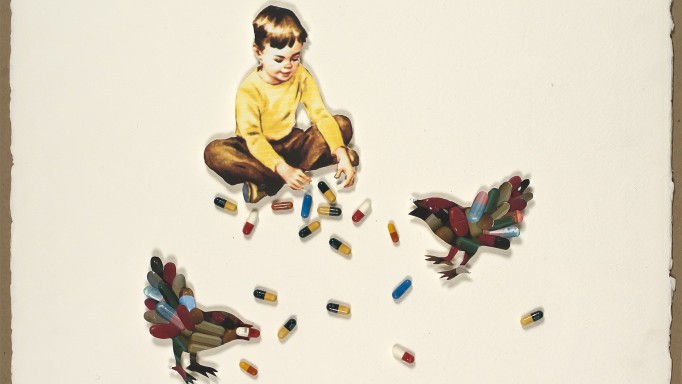Herpes simplex—often simply called herpes—refers to conditions caused by two related viruses that cause painful blisters. Oral herpes (cold sores or fever blisters), which affects the lips and mouth, is usually caused by herpes simplex virus-1 (HSV-1), while genital herpes, which affects the genital or anal region, is typically caused by herpes simplex virus-2 (HSV-2). However, both viruses can occur in either area, and HSV-1 is a growing cause of genital and anal herpes.
HSV-1 and HSV-2 belong to a larger human herpesvirus family that also includes the varicella-zoster virus that causes chickenpox and shingles (VZV, or HHV-3), Epstein-Barr virus (EBV, or HHV-4), cytomegalovirus (CMV, or HHV-5) and the HHV-8 virus that causes Kaposi sarcoma. Like other herpesviruses, HSV-1 and HSV-2 cause lifelong infection. They establish latent infection in nerve cells and cannot be cleared by the immune system.
Herpes simplex is very common. It is estimated that around two thirds of Americans have HSV-1, usually acquired during childhood, and around 15% of adults have HSV-2. The prevalence is higher among people living with HIV. Although women are more likely to get genital herpes from men than vice versa, gay men have a higher rate than the population at large.
Herpes is hard to prevent, can be difficult to treat and cannot be cured, but scientists are working on vaccines and better medications.
How is HSV transmitted?
HSV spreads primarily through skin-to-skin contact. HSV-1 is mainly transmitted through contact with cold sores or via saliva. HSV-2, which is classified as a sexually transmitted infection (STI), usually spreads via contact with sores on the genitals or in the anal region. But the viruses can be transmitted from the mouth to the genitals or the reverse during oral sex. HSV-1 does not protect against acquisition of HSV-2, or vice versa.
HSV may also be transmitted from mother to baby during pregnancy or delivery, resulting in neonatal herpes, a rare but serious condition that can lead to lasting neurological damage or death.
People with herpes often experience shame or stigma and have concerns about transmitting the virus to their sex partners. Condoms and dental dams offer only partial protection because sores may occur in uncovered areas. Interestingly, some studies suggest that daily tenofovir disoproxil fumarate (Truvada and generic equivalents) used as HIV pre-exposure prophylaxis (PrEP) reduces the risk of HSV-2 acquisition and the severity of genital herpes outbreaks.
Talk to your partners about genital herpes and other STIs, and avoid sex during active outbreaks. HSV-1 and HSV-2 spread most easily when a person has active sores, but some people shed virus prior to outbreaks. Many people are asymptomatic or have such mild symptoms that they are unaware that they carry—and could potentially transmit—HSV.
Herpes simplex and HIV
People living with HIV, especially those who are not on antiretroviral treatment and have a low CD4 T-cell count, are more likely to carry HSV-1 and HSV-2, and they are prone to more frequent and more severe outbreaks. What’s more, having herpes makes it easier to acquire and transmit HIV. HSV-2 increases the risk of acquiring HIV by approximately threefold, according to the World Health Organization. Starting and staying on antiretroviral therapy can reduce the frequency and severity of herpes outbreaks.
What are the symptoms of herpes simplex?
HSV-1 and HSV-2 are inactive most of the time, but they can periodically reactivate and cause outbreaks, or flare-ups.
Herpes usually begins with small red bumps that fill with fluid and rupture to form painful blisters or ulcers. Oral herpes affects the mouth, nose and throat, while genital herpes affects the penis, scrotum, vulva, vagina, cervix, anal area and buttocks. The sores may be accompanied by flu-like symptoms, including fever, headache, muscle aches and swollen lymph nodes.Symptoms typically start two to 12 days after exposure.
Some people with genital herpes experience painful urination and discharge from the penis or vagina. In a small number of cases, herpes simplex can affect organs including the eyes, lungs, liver and brain. HSV infection of the fingers is known as herpes whitlow.
In people with a healthy immune system, the sores typically heal within two weeks and the virus becomes dormant, but it does not go away. Many factors can lead to viral reactivation and recurrent outbreaks, including other illnesses, fever, injury, sun exposure, emotional stress and menstrual periods. In some cases, outbreaks have no apparent trigger. Some people experience a tingling or burning sensation known as a prodrome shortly before an outbreak. Symptoms of recurrent outbreaks are similar to those of initial infection, but they are often milder and briefer. Outbreaks tend to become less frequent over time.
People with weakened immunity—including those with poorly controlled HIV—may experience more severe and prolonged initial symptoms, are more likely to develop serious complications and can experience more frequent and severe recurrent outbreaks.
How is herpes simplex diagnosed?
Oral and genital herpes are often diagnosed based on symptoms and the appearance of sores. Genital herpes symptoms may resemble those of other STIs. A definitive diagnosis can be made by testing a sample of fluid from a sore. A blood test for HSV antibodies can detect inactive virus. People with genital herpes and their sex partners should be tested for other STIs.
How is herpes simplex treated?
Antiviral medications can reduce the severity and length of symptoms and reduce the likelihood of HSV transmission, but they do not eliminate the virus.
Three similar nucleoside analogs—acyclovir (Zovirax), valacyclovir (Valtrex) and famciclovir (Famvir)—are approved for the treatment of oral and genital herpes. Pills work best for mild to moderate outbreaks, while intravenous acyclovir may be used to treat severe symptoms. Valacyclovir is better absorbed after oral administration, allowing for less frequent dosing than acyclovir. Topical creams or ointments containing acyclovir, penciclovir (Denavir) or docosanol (Abreva) may help herpes sores heal faster. Trifluridine drops are used to treat HSV infection of the eye.
People who are prone to frequent outbreaks can use the same oral medications at lower doses to prevent viral reactivation. Studies show that suppressive therapy reduces the frequency of genital herpes recurrence by about 75%. Ongoing antiviral treatment also reduces the risk of HSV transmission.
Treatment works best if it’s started within 24 hours after the first symptoms or prodromal signs. People with recurrent herpes outbreaks can keep medications on hand so they can start them immediately. A course of therapy usually lasts about a week. The oral antivirals are generally safe and well tolerated with few side effects.
HSV does not always respond to commonly used antivirals, and in some cases, people develop acyclovir-resistant virus. This is especially likely to occur among immunocompromised people. Because the three approved antivirals are similar, people who develop resistance to acyclovir are likely to be resistant to valacyclovir and famciclovir as well. Intravenous foscarnet (Foscavir) or cidofovir (Vistide) are used to treat acyclovir-resistant HSV. However, these drugs are toxic to the kidneys and require close monitoring. Topical cidofovir gel (Forvade) and foscarnet cream are other options.
Beyond antivirals, over-the-counter medications such as ibuprofen and topical preparations containing benzocaine or lidocaine may be used to relieve pain. If you have oral herpes, avoid spicy and salty foods, citrus fruits and hot water. Sitting in a warm bath can lessen the pain of genital or anal sores. Some research suggests that the amino acid lysine can help control flare-ups. During an outbreak, keep sores clean and dry, as this helps speed up healing and prevents bacterial infection.
Are there any experimental treatments?
Because existing antivirals don’t work for everyone and cannot cure herpes, researchers are studying other therapies that might be more effective. Pritelivir, a direct-acting antiviral that targets HSV helicase-primase enzymes, is being studied in Phase III trials. Several other antiviral medications are also under study.
Researchers are also studying other types of treatment, including monoclonal antibodies and gene therapy, in an effort to better treat and cure herpes simplex. One experimental approach, for example, uses CRISPR gene editing to cut latent HSV out of nerve cells.
There is currently no vaccine to prevent HSV-1 or HSV-2 infection, but preventive and therapeutic vaccines are another area of active research. Moderna and BioNTech are both working on HSV vaccines that employ the mRNA technology used for their COVID-19 vaccines.
A growing herpes advocacy movement is following the footsteps of HIV activists to demand more funding and research. Visit ClinicalTrials.gov to learn what vaccines and experimental therapies are being testedfor herpes simplex, and ask your doctor whether a clinical trial might be a good option for you.
Last Reviewed: July 6, 2023














